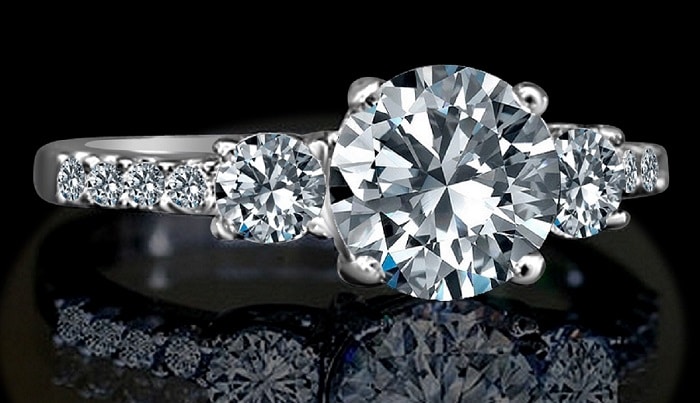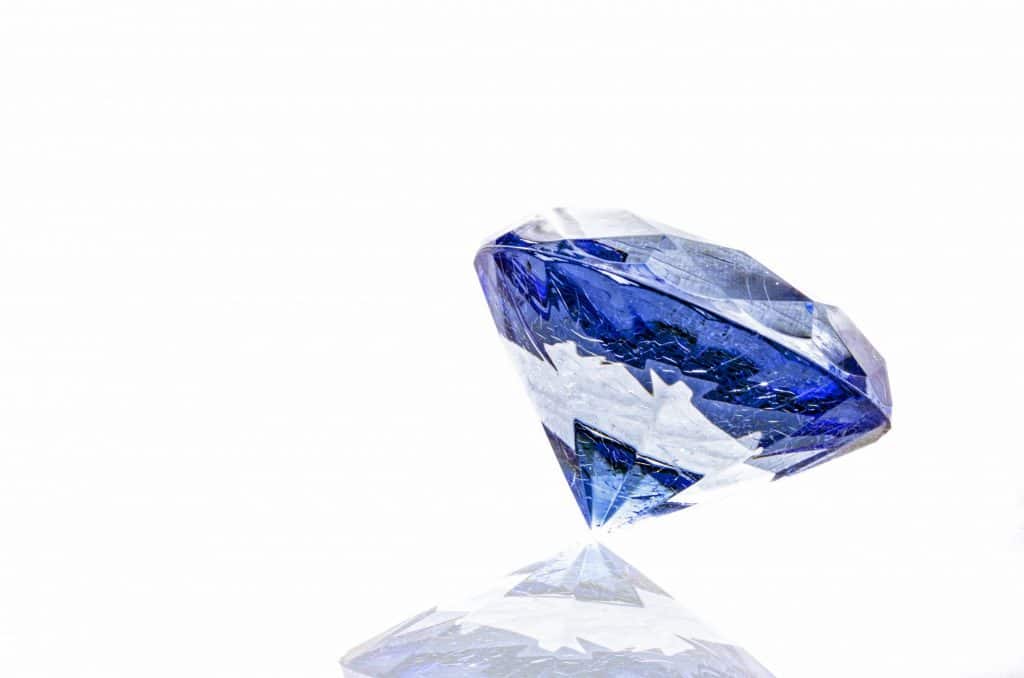Simulated diamonds provide a great alternative to real diamonds and at a far cheaper price. In fact, many people often invest in simulated diamonds as stand-in jewelry, while their real stones rest in safekeeping.
Purchasing quality simulated diamonds is similar to purchasing authentic diamonds, except instead of their value being related to its brilliance, shine, and durability, they are typically valued by their color. Read on to find out more about what is a simulated diamond and what are your best options.
What Is a Simulated Diamond?

A simulated diamond is a gemstone that is specially manufactured to resemble a real diamond. They are typically comprised of crystalline materials like moissanite, cubic zirconia, or YAG. Additionally, they can also be formed from natural clear gems like clear quartz, white zircon, and white sapphire.
Simulated diamonds are often confused or termed interchangeably with synthetic diamonds; however, a simulated diamond differs from synthetic diamonds in that synthetic diamonds are actual diamonds that are laboratory-grown.
Simulated diamonds, on the other hand, though intriguing like genuine diamonds, do not possess the chemical or physical properties that make up diamonds. Instead, they are made using a process in which the materials are heated from the inside out, using extreme heat mixed with a metal stabilizer, to form cubic crystal crystals.
Once the gem is heated, it is then cooled under special conditions until it hardens and forms its crystals. It is then cut into the same dimensions as authentic diamonds.
Do Simulated Diamonds Look Real?
Simulated diamonds look surprisingly close to real diamonds; however, upon closer inspection, typically by a trained gemologist or with the use of a microscope or loupe, they may appear too clear, or flawless, alerting the observer to its fabrication, as even the finest natural diamond contains flaws.
Another way to tell what is a simulated diamond is the price. Though simulated diamonds are often flawless, they do not possess the same physical properties or chemical composition as genuine diamonds, so they are often lower in price.
Furthermore, simulated diamonds tend to be whiter than natural diamonds; however, there are some genuine white diamonds. These colorless diamonds are quite rare, so they are also very expensive. However, if you run across a white stone that contains no hints of yellow, and it is offered at a fairly low price, chances are it is a simulated diamond.
Diamond simulants also tend to have more sparkle than real diamonds. In addition, they tend to exhibit all the colors of the rainbow. On the other hand, real diamonds tend to display more brilliant flashes of light.
You can also tell what is a simulated diamond by blowing on it. When you blow on a diamond simulant, fog and moisture tends to remain on the surface, whereas, if you blow on a real diamond, it usually dissipates.
Lastly, when understanding what is a simulated diamond, note that it also tends to scratch much easier than a natural diamond. Real diamonds have a very hard surface which is tough enough to withstand scratches. On the other hand, diamond simulants contain a much softer surface, which makes them more prone to scratches.

Most Popular Simulated Diamonds
There are various materials from which stimulant diamonds are made, however, some of the most popular include:
White Sapphire
Sapphires, which are natural clear gems-meaning they are mined from the earth, are the second hardest to diamonds. They are completely colorless and rare. Consequently, white sapphires are similar to genuine white diamonds, which makes them a highly preferred choice for many jewelry designs.
Clear Quartz
Clear quartz is a naturally occurring mineral found in the earth’s crust. It has a clear crystalline structure and glass-like luster. In addition, its inclusions give the stone a unique appearance, which many appreciate.
Furthermore, because it is one of the most abundant elements found on the earth, it often cheaper than other simulated diamonds. In addition, due to its soft structure, it is not recommended for wedding or engagement rings. However, it is a great choice for pendants, earrings, and other jewelry pieces.
Cubic Zirconia
Cubic zirconia is a colorless, manufactured crystalline material that resembles the clarity and brilliance of an authentic diamond. In addition, it is hard and flawless and can be made into the same colors as natural diamonds. In fact, cubic zirconia’s properties are so compatible to diamonds that it is hard to distinguish between the two except by the trained eye.
Moissanite
Moissanite is a rare, scarce mineral that is found inside a fallen meteor crater discovered in the desert of Arizona, and it contains the same metal-rich elements that surround the stars. Similar to diamonds, it is one of the hardest, most brilliant elements on earth. This makes it a great choice for a variety of jewelry settings.
In fact, according to some, this unique gem transcends the beauty and sparkle of natural diamonds for a unique piece that is all its own and at an affordable price.
Synthetic Garnet
Garnet, which is most often red, is a natural gem found beneath the earth’s surface throughout the world. It is mined in places like Brazil, India, and South Africa. However, for a more affordable option, many people opt for synthetic garnet.
Synthetic garnet, like all synthetic gemstones, are manufactured in laboratories using the same ingredients and natural processes found in the natural stone. Alternatively, they can be manufactured without being chemically identical. Consult with your professional jeweler about which you prefer.
Summing Up
As you can see, a simulated diamond differs from more expensive natural and synthetic stones; however it can be just as rewarding. In fact, most simulated gems undergo the same rating system as used to rate natural diamonds in order to ensure their quality.
In addition, purchasing your simulated diamond from a professional jeweler also helps ensure a quality product, which can be used for beautiful engagement rings, stud earrings and more. Finally, remember that just like natural diamond pieces, your stimulated diamond should receive regular cleanings and maintenance to ensure its longevity.

